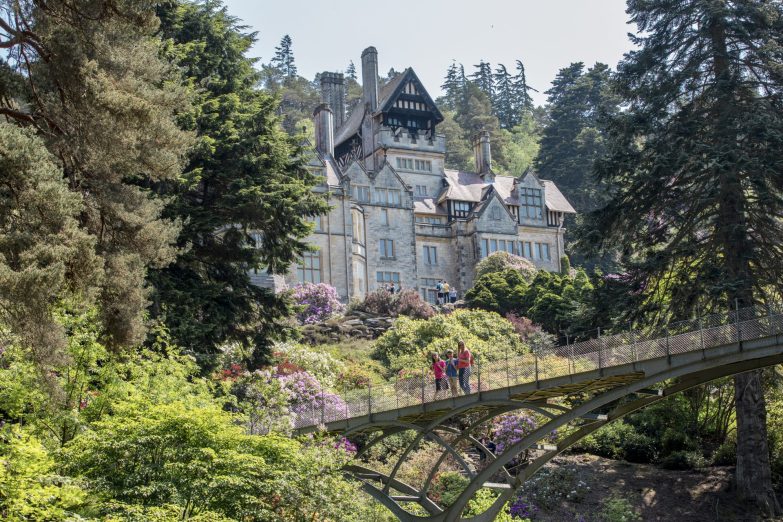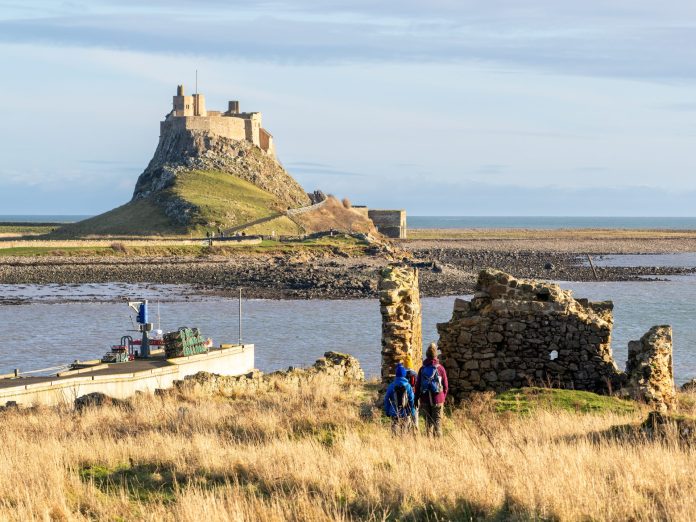England’s fantastical and electric north
The National Trust’s recently appointed collections and visitor engagement coordinator, Felicity Wheeler, spent more than 12 years working for the National Trust in England. She gives us an insider’s view of the magical treasures on offer in the northerly county that she called home.
Northumberland is a hidden gem with a unique character, well worth a stopover on the way to or from Scotland. The people are down to earth and friendly despite the area’s lawless history, and I developed a strong connection to the wild landscapes of hill and moorland, woods and babbling burns (streams), and especially the beautiful houses of Wallington and Cragside, where I worked.
Northumberland is the most sparsely populated county in England and is a haven for wildlife, especially the tiny native red squirrel and the gorgeous little puffins of the Farne Islands. The coastline boasts beautiful, white sandy beaches with few people – attempt to brave the icy waters of the North Sea if you dare however.
Holy Island
On this coastline is Holy Island (Lindisfarne), which is joined to the mainland via a causeway at low tide; visitors who get their tide times wrong have been caught out by the rising sea water. The island’s name stems from its history as one of the most important centres of early English Christianity. Lindisfarne Castle is tiny but very distinctive and appears to rise out of the landscape of sea and rock as if part of it. Not really a castle, it was originally built in the 16th century as an artillery fort and converted into a holiday home by famous English architect Sir Edwin Lutyens in 1903. The views from the top are breathtaking and there is a delightful Gertrude Jekyll garden next door.
Wallington house
The National Trust of England was gifted the large estate of Wallington near Morpeth in 1941. The history of the house dates to 1688, when it was a square building set around an open central courtyard – madness in northern winters. This courtyard was roofed over in the 1850s and has become the heart of the house, painted with scenes from Northumbrian history and local wildflowers by William Bell Scott, John Ruskin and Lady Trevelyan herself. The cellars are most interesting as they are part of a much earlier mediaeval farmhouse structure and fortified Pele tower. They only survive because the buildings were knocked down to first floor level and the ground then built up around them. Their thick walls were perfect as foundations for the later 1600s house. Wallington sometimes holds cellar-to-attic tours revealing Wallington’s evolution and telling the stories of the mischievous Trevelyan children who lived there. The grounds are flat and easy to walk with lakes, woods and a gorgeous walled garden.
Electrical Cragside
Nearby Cragside is very different. First built in 1863 for Lord William Armstrong and his wife Margaret, this pioneering house was known locally by the late 1800s as the House of the Magician due to its revolutionary electric lighting, early underfloor heating system, dishwasher, lift, Turkish bath and flushing toilets. It is a magical place, the house huge and sprawling on a rocky crag yet surprisingly only ever seen in parts, always somewhat hidden by an enigmatic pine forest and rhododendrons. If you have a car venture up the narrow, winding forest drive to the manmade lakes that powered a water turbine in the 1870s, making Cragside the first house in the world to be lit by hydro-electricity.
The collections there contain magical, weird and wonderful electrical items. An inventor and philanthropist, Lord Armstrong experimented with early electricity conducted through air and water, and made photographic plates of the results. These pictures hang on the walls, revealing echoes of natural shapes, such as tree roots and ferns. The Electrical Room at the back of the house, where he did these experiments, now houses a fabulous interactive display in a darkened, atmospheric space that brings his early experiments to life and showcases the electrical equipment used. A modern copy of a Wimshurst machine brings an electrostatic spark to life. Along with the regional curator and designer, I assisted in the presentation of this room when it was developed in 2015 and I’m proud it is still delighting people 10 years later. Go take a look!
Visit nationaltrust.org.uk/visit/north-east to find out more and plan your trip.






